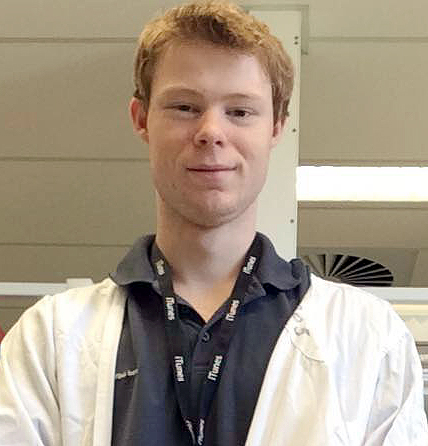If you’re heading to the 5th WA Synchrotron Symposium at Curtin University today, be sure to catch Curtin Health Innovation Research Institute (CHIRI) PhD student Clinton Kidman talk about how he’s using synchrotron science to explore the link between iron and fatty liver disease.
Clinton is among a team of CHIRI researchers using the Australian Synchrotron facility in Melbourne to measure the concentration and distribution of fat and other organic molecules in the liver at a resolution and sensitivity not possible with other techniques. The team also uses Australia’s Nuclear Science and Technology Organisation’s facility at Lucas Heights to measure iron.
“Non-alcoholic fatty liver disease and disorders of iron overloaded manifest largely in middle-age and can cause further complications, such as liver failure, if not treated,” Clinton said.
“These diseases and disorders will increase the burden on the health system as Australia’s population ages.
“My PhD focuses on understanding the underlying mechanisms of these diseases and disorders so we can better treat patients with fat and/or iron build-up.”
Clinton is carrying out his PhD under the supervision of CHIRI’s Dr Ross Graham (School of Pharmacy and Biomedical Sciences), Dr Mark Hackett (School of Molecular and Life Sciences) and Dr Cyril Mamotte (School of Pharmacy and Biomedical Sciences).
Clinton’s presentation, “Using multimodal FTIR, XFM, and PIXE imaging to investigate the link between iron and fatty liver disease” is scheduled for 11.40am today, 30 November 2018.
CHIRI’s use of synchrotron science, including that of Clinton’s lab, features in this flyer, which was distributed at the recent Australian Synchrotron’s Annual User Meeting in Melbourne – an event proudly supported by CHIRI.
Find out more about the 5th WA Synchrotron Symposium on Eventbrite.
